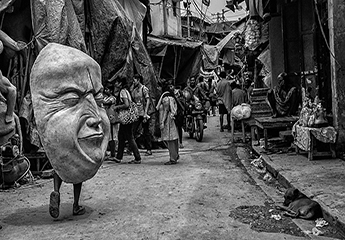Kumortuli or the land of potters, is a small colony of Kumors (Bengalis term for potters) situated in the northern Kolkata just beside the river Ganges. The clay artists of Kumortuli not only masters in making pottery but also have proved their excellence in making clay idols of Hindu gods and goddesses. The existence of the artworks of Kumortuli dates back to 1750s, when the British businessmen colonized India for the first time, and then founded the city of Calcutta (now Kolkata) by amalgamating three small villages of Gobindapur, Sutanuti and Kalikata. Calcutta became the first capital of India under the British rule. They grouped the local residents and colonized them based on their traditional professions. Thus came the land of Coomartolly, as it was known then, a colony of Coomars or Kumors, the regional name for those who makes earthen pottery and idols for their living. This legacy of artwork has been going on generations after generations after that.
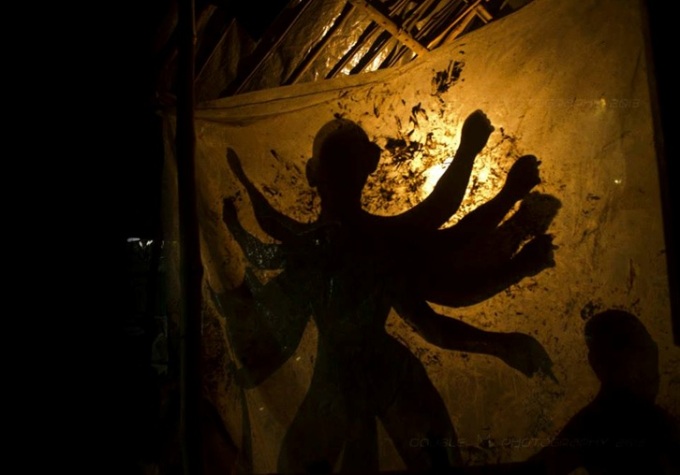
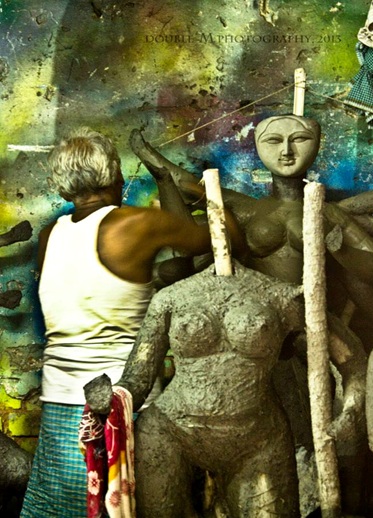
Earlier, during the puja days, the families used to invite the Kumors or the artisans to stay in their homes and build the idols there only. Now, they have their own personal studios and quarters to work and idols are supplied to the customers from there only. Their houses where they live itself host the studios. Kumortuli workers are supplying clay idols of Hindu gods and goddesses not only in and around Kolkata, but their popularity have crossed the political boundaries of states and countries and have reached overseas as they now export Durga Idols to cities like New York, Los Angeles, London, Paris and many other abroad states. The intricate designs, the delicate decorations and the lively expressions of the clay idols have won hearts throughout the globe. The expertise of the artisans of Kumortuli has turned this place from a mere colony of potters to a phenomenon of earthen artistry renowned throughout the world. Recently, Kumortuli is included in the list of seven wonders of Kolkata.
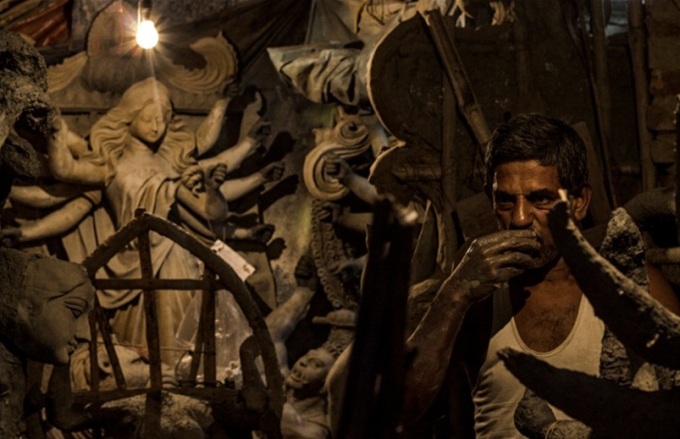
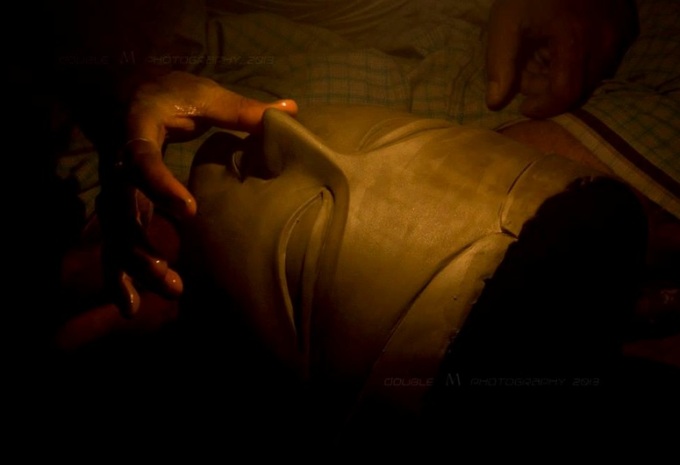
The backbone of Kumortuli is the river Ganga, from which they collect their raw material of clay and mud. The life here starts with the mixing of clay and husk in the morning and ends with polishing the finished products at night. Though the artists here are busy throughout the year, but their work hits the pedal 3-4 months before the Durga Puja. A standard idol takes of time of 3-4days, on an average, to be completed, though the time is dependent upon its size. The task of creating an idol starts with making the main infrastructure by bamboo sticks and then wrapping it with layers of dried straw. Then starts the process of applying different layers of clay and sometimes a mixture of clay and husks. The final coating is of a more liquid clay material used for final touch and polishing followed by applying colors and the clothes on the idols.
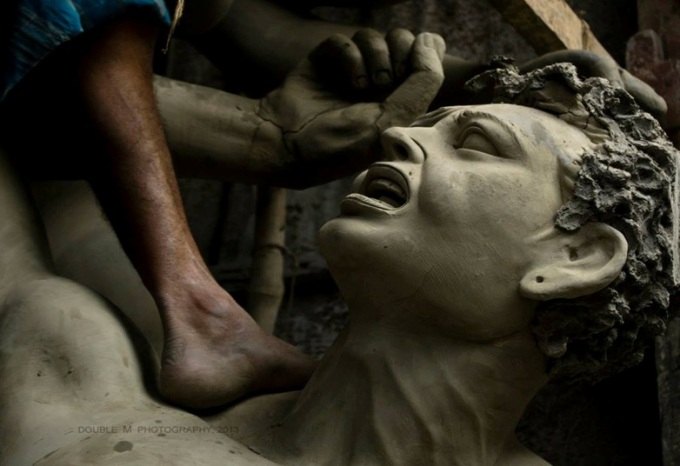
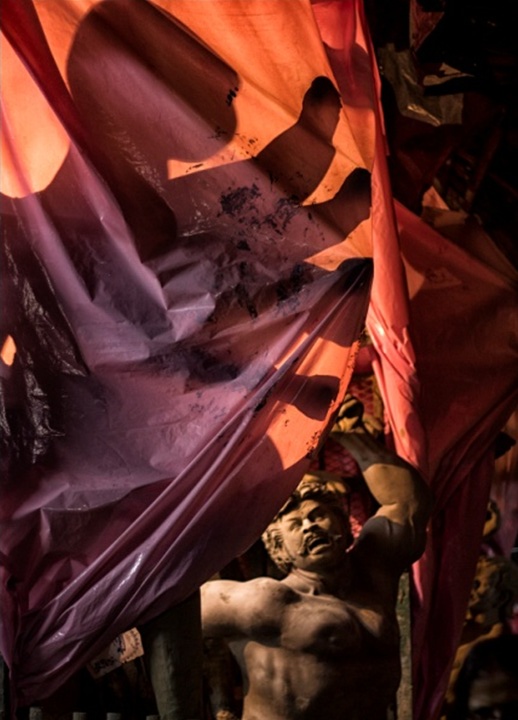
By the virtue of its splendid works Kumortuli is now a popular tourist attraction in Kolkata. The art of making idols from the mere bamboo infrastructure to finally giving it a life by painting the third eye on the Durga idols (the Chokkhudan) is which attracts everyone, from youngs to olds, from locals to outsiders and from busy businessmen to some creative photographers. Kumortuli is also very easy to visit as it is connected by bus, auto, tram, metro and also by ferry service across the river Ganga. To be precise, it is situated just in between Sovabazar and Ahiritola.
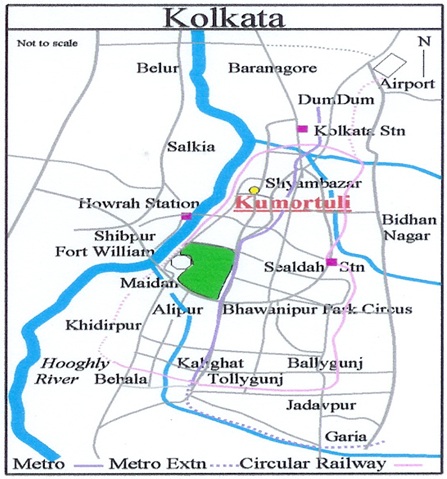
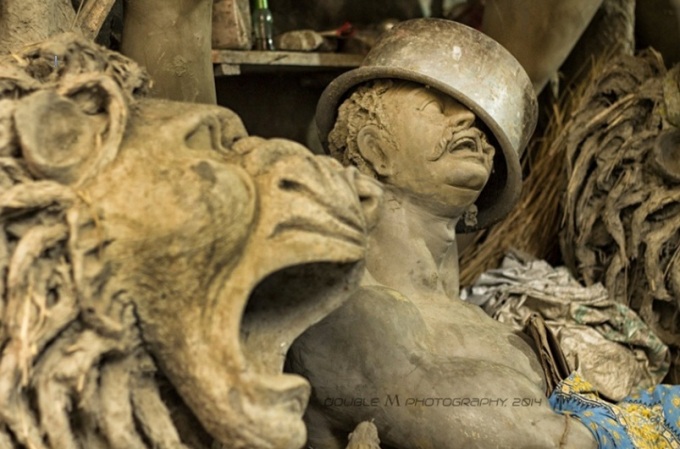
Every tourist visiting Kolkata, should at least once walk through the streets of Kumortuli, feel the raw smell of wet clay, watch the skills of the artisan and the memory will surely be a nice one to cherish for long.
Looking forward to your feedback, any constructive criticism is well accepted. Hope you have liked it.
Thank you, and Happy Clicking.
